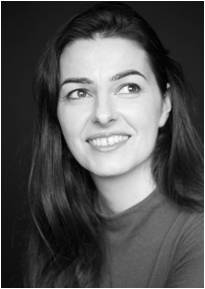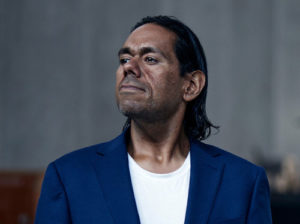
Ross Edwards
© www.rossedwards.com
Before you run screaming into the night, stop. New classical music has changed, it’s now listenable, and not just squawky.
Cynics will be in a rage if I tell them that old classical music is just a bunch of stuff that everyone has heard ten thousand times before, so I won’t say that. But new classical music has found a fresh voice.
Just as the music industry continues to evolve, so too does new classical music. Today, it has moved back to that sound that is everyone’s old friend, tonality.
Yes, gone are those weird, uncomfortable annoying sounds that were once new classical music. It went by several names, such as Serialism or 12-tone, then there was New Complexity and a few other odd-sounding descriptions. I’ve often wondered, what happened to old complexity?
Today it is just new classical music, but some do call it Art Music, which I like.

Jennifer Higdon
© jenniferhigdon.com
New classical music has a lot going for it. There is nothing quite like listening to something really good, playing it back a dozen times, and hearing what is going on underneath the noise that the music creates. It’s fun, it’s a lot of fun.

Katia Beaugeais
© www.newmusicblock.com
I know you are just dying to hear some of this new wondrous music but hold on a second. New classical music as I said, has evolved. So don’t expect to be hearing things like a symphony, or concertos, or sonatas. While there are still some of those styles and formats being created, much of this new music has abstract or descriptive titles, like Yanada. Australian composer Ross Edwards loves giving colourful names to his works. Yanada means moon in the language of the Aboriginal people from around the Sydney Basin. While Yanada is not exactly new, composed around 1999, some composers like Edwards never went to the dark side, 12-tone.
One positive aspect of new classical music is that women get more of a go now. While equality is still a way off, it is much easier to hear the works of female composers today than it was 20 years ago. American composer Jennifer Higdon has made a strong impression in the classical music world.

Dobrinka Tabakova
© www.dobrinka.com
Since I heard Higdon’s string quartet Southern Harmony, I fell in love with its style and voice. French-Australian composer Katia Beaugeais who is also an amazing saxophone player has music that sweeps you off your ears. Her piece First Light at Uluru, aka Ayers Rock, is dreamy sensual stuff. Bulgarian composer Dobrinka Tabakova also has dreamy music. The deep sensuality in her style creates physical pleasure. Her piece Dawn for solo violin and cello with string orchestra is a song of sublime beauty.
One of the most pleasing aspects of new classical music is much of it has a sonic beauty combined with exciting rhythmic variations and unusual pairings of instruments. William Barton is a performer and composer who plays, did I say plays, he creates a world of sound on the didgeridoo. Listen to his Birdsong at Dusk, which was written by and featuring William Barton singing and playing that mystical instrument the didgeridoo, with the Australian Youth Orchestra String Quartet.
Like progress in anything, new classical music has moved away from what many have described as ugly sounds to the opposite, and audiences the world over are loving it. New classical music is receiving much greater favour with orchestras and especially ensembles. Most new classical music is written for smaller groups. Orchestras still get a go, but the highly expressive nature of this new music fits better into an ensemble format.

William Barton
© www.williambarton.com.au
While there are still schools and pockets of composers sticking to the old ways of 12-tone, they are becoming fewer by the year. The odd thing about 12-tone composers is that their music never had to be that harsh, grinding sound that most 12-tone composers created. They still could have made music that appealed while using the 12-tone system. However, like any reform, they wanted to smash the old and bring in the new. Hopefully, those composers have learned that just because their ideas changed, it did not mean that the public taste in music had altered.
That said, maybe some of this new style of classical music could not have come about unless we had gone into 12-tone.

Kate Moore
© www.abc.net.au
To wrap up this short journey into new classical music here is one of my favourite composers of this flourishing style. Kate Moore is an Australian-Dutch musician and composer of new music. She not only has a unique voice, but her music sits in a special realm. Moore is one of those few composers who conceives music that sounds untouchable; it is hard to put your finger on.
Here is Kate Moore’s Piano Concerto Beatrice, with Vivian Choi playing the piano and the Willoughby Symphony Orchestra, another fine Australian orchestra. This deeply moving and powerful music captures the vision of perfection that Beatrice represents in Dante’s The Divine Comedy.




I love your offbeat articles and the informality of your ways of expressing them. The one on the Quartet was especially informative.
Thank you, Robert. I love writing them. They give my great joy, as does almost all music.